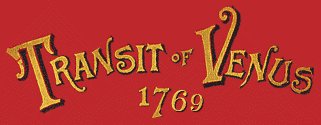Captain James
Cook The Voyage of the Endeavor
Brian Greig collection

Globe projection showing places of ingress and
egress for the planet Venus during the 1769 Transit
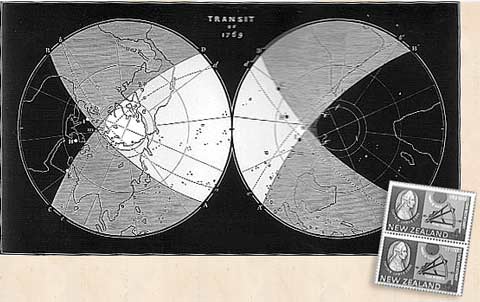
Transit of Venus R.A. Proctor 1875 - Brian Greig collection
Globe
shows views of the earth from the sun during a Transit Plus
set of instructions for 6 transits
B.GREIG COLLECTION
|
|
 top top
Island of Tahiti 1780 Alex Hogg
James Cook sketch of Island
of Tahiti, showing Matavai Bay and Point Venus,
originally found by Captain Wallis Sometimes called Point Royal.
Brian Greig collection
 top top
| 1/5
Scale model of the 4 inch James Short Gregorian telescope used
by Cook at Tahiti in brass or sterling silver B.G. COLLECTION
|
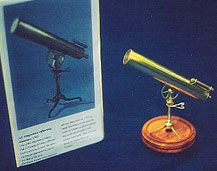
|
 top top
View of Point Venus and the Endeavor at anchor
in
Matavia Bay, Tahiti from One Tree Hill
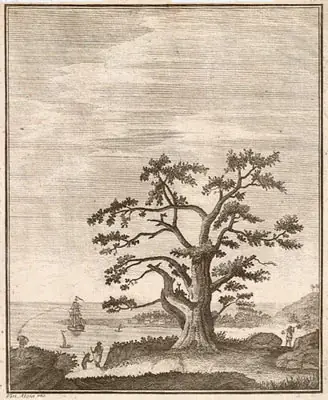
Italian Publication Circa 1780 sometime
prints were printed back to front this came
about by laziness as it was easier to engrave a direct copy (which
printed in reverse)
than to engrave a reversed copy. (Thanks to Dr G.J.Tee Auckland
University New Zealand).
 top top
The moons of Jupiter
were used by NAVIGATORS TO check their instruments
and confirm their longitude.
they were also used for determining the speed of light
Astronomy Explained......James Ferguson
1757 - Brian Greig collection
 top top
James Cook and Joseph Banks,
{the expedition botanist} would have
remembered these types of microscopes from their earlier years,by
the
1760's more modern instruments appeared. These sketch's date from
about 1720.
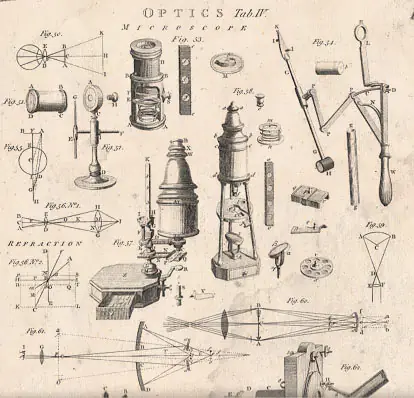
Brian Greig Collection, Circa 1750
Note the
small microscope on the table beside a young
Joseph Banks, painted by an unknown artist the painting once
hung at Revesby Abbey was home of Joseph Banks England
Joseph Banks showing the locals the
Transit of Venus using a Telescope
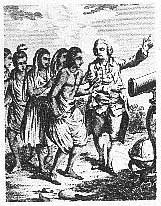
"Astronomy" Fred Hoyle
 top top
|
|
Type of instrument supplied to Joseph Banks
and Dr Solander while aboard the Endeavor possibly by George
Adams.
He also supplied William Wales and William Bayley with instruments
on Cooks second voyage for a price of twenty seven pounds
and nine shillings.
|
| |
|
|
| |
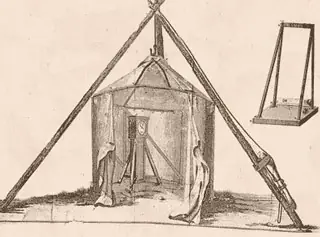
|
|
|
|
|
|
Tent
Observatory used in may of Cook's expeditions.
French Edition 1783 - Brian
Greig collection
|
| |
|
 |
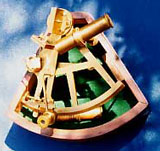 |
 |
Jesse Ramsden Sextant
Private Collection
|
|
 top top
Peter Dolland supplied refracting telescopes with
a focal length of about 40inch focal
length they were fitted with a split objective { a form of heliometer}
and micrometer for
precise measurements, the style taken by Cook would have been close
to these two images
Dip Needle by Nairne was
taken by Captain Cook
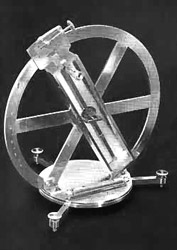
"Apparatus of Science at Harvard
University "
 top top
|
From the Science Museum London Collection
This model was made before 1761 to demonstrate
the problems
involved in finding the distance of the Sun from the Earth using
the planet Venus. It was used to show clearly why transits of
Venus occur at intervals of little over a hundred years and
repeat two transits where each transit is separated by eight
years i.e. 1761-1769, , 1874-
1882 and in the 21st Cent. 2004 and 2012."
|
|
 top top
Greenwich Observatory and the Astronomers
Royal played an important part in all the
Transits of Venus,instruments were calibrated and checked, the long
case astronomical regulator clock made by John Shelton number 35
would have been checked here also.
National
Maritime Museum, as it would have appeared in the 18th Century
"Discoverers
of Space" 1969 - Brian
Greig collection
 top top
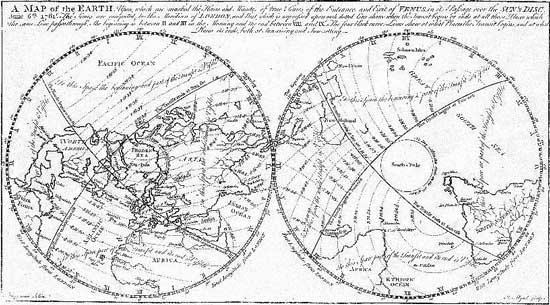
Astronomy explained by James Ferguson
1785 Brian Greig Collection
|
Mappemonde
Sur la quelle on amarques les Heures et les Minutes des tems
vrai delentree et de la sortie du centre de Venus...............par
M.DEL'ISLE del' Academic Royal des Sciences.
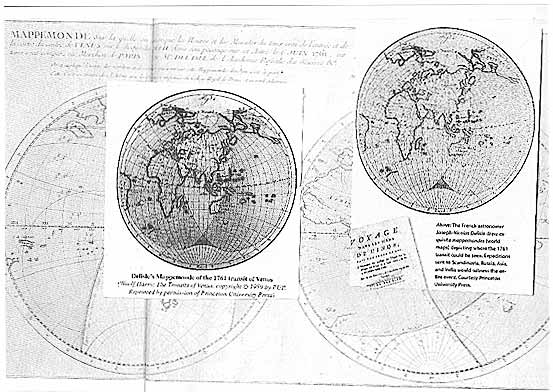
This map was located by me
after having been unknown to the astronomical community for
200 years H.C.Woolf ¨THE TRANSIT OF VENUS¨1959 PRINCETON
UNIVERSITY PRESS never Sited the mappemonde nor did David
Sellers in his: ¨THE TRANSIT OF VENUS¨Magavelda Press
2001 it was also overlooked by W.Sheehan and J. Westfall in
their ¨TRANSIT OF VENUS Prometheus Books, 2003 Their article
in Sky and Telescope Feb 2004 repeated the same error Delisle
was French and the so called mappemonde is Dutch In the above
publications there is a real mappemonde by La Lande labled
as such. No one appears to have wondered why two different
constructed maps had a common name.
Delisle had used the Paris
Observatory as the meridian upon which the viewing times were
based. James Ferguson redrew the "MAPPMONDE" with
the Greenwich Meridian and during the transit he viewed the
event with others from the roof top of the British Museum
London. He is better known for his lectures on astronomy and
the models and orreries he used to give a better understanding
of the cosmos.
Astronomer and map maker
Joseph Nicolas Delisle played an important part in the life
of another French astronomer Charles Messier who he hired
in 1751 as a draughtsman. We know him today as the founder
of the Messier Catalogue { M31} the Andromeda Galaxy the Omega
nebulae { M17 } etc etc.
|
 top top
Astronomy explained J.Ferguson 1757 , Brian Greig Collection
 top
top
 |
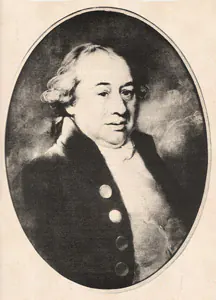 |
 |
John Russell was a portrait painter and a Member of the
Royal Academy of Art. As a hobby he bought a 6 inch reflecting
telescope {Newtonian } from Sir John Herschel and starting
drawing the moon.
Eventually making his own moon gores and produced this
mechanical model in 1796 showing how the moon orbits the
Earth.
William Wales painted by John Russell in 1794 From Christ"s
Hospital, West Horsham England and with thanks to Dr.Wayne
Orchiston of Sydney.
|
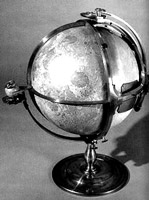
From the Science Museum
Collection London |
|
|

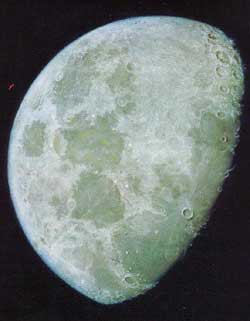

The original painting of the moon { 1795 } by John Russell
R.A.about five feet square was given to Radcliffe Observatory
in 1824 by his daughter. He also painted John Wesley,
William Cowper, and Sir Joseph Banks in 1788
Graphic Magazine 1922
|
| |
|
 top
top
James Cooks Cottage donated to the people of
Australia from the people
of England, shipped out brick by brick and reassembled in Melbourne.
Image kindly supplied by Cook's Cottages
Fitzroy gardens Melbourne Australia
 top
top
James Cook Signature
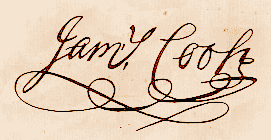
Porcelain Plaque of James
Cook
by Josiah Wedgewood
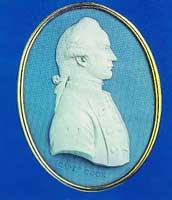
"James Cook" by Beaglehole
 top top
|
